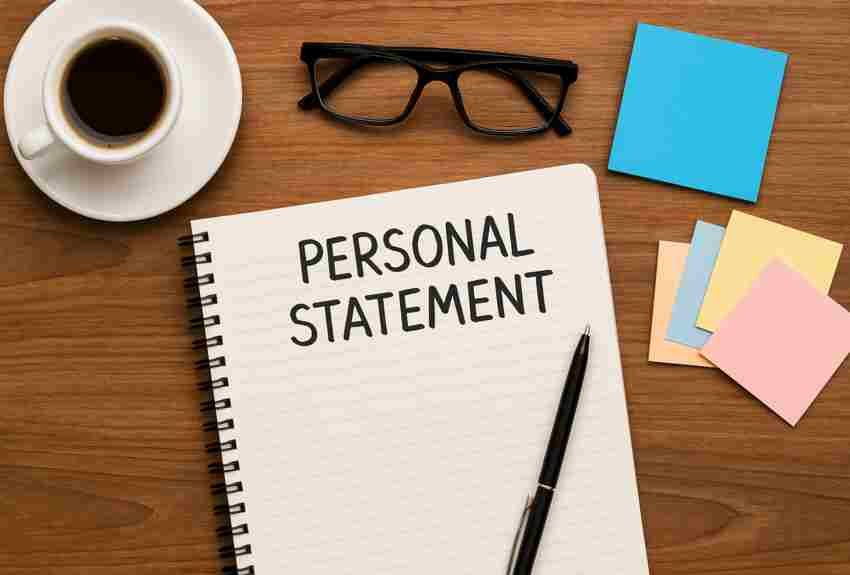
A personal statement is a written document submitted during university applications that explains who you are, your academic interests, experiences, and career aspirations. For international students, it’s a chance to go beyond test scores and transcripts—showcasing your motivation, skills, and fit for the program.
Admissions officers use personal statements to assess not just eligibility, but also personality, clarity of thought, communication skills, and future potential.
How to Write an Outstanding Personal Statement in 10 Steps
Understand the Purpose
Before you write, know why personal statements matter. They’re your chance to:
- Explain your interest in the course.
- Share your academic journey.
- Demonstrate alignment with the university’s values.
Tip: Read the course description and university mission to tailor your statement effectively.
Start with a Captivating Opening
Your opening line should grab attention and make the admissions officer want to read more. Avoid generic clichés like “I have always been interested in…” Instead, start with a unique experience, insight, or challenge that shaped your academic interest.
Explain Your Motivation for the Course
Clearly articulate:
- Why you’re passionate about this subject.
- What inspired your interest.
- How this course aligns with your academic or career goals.
👉 Use real-life examples—projects, books, or experiences that led you here.
Share Relevant Academic & Extracurricular Experience
Highlight your academic background, internships, research projects, or extracurriculars related to the field. Show how these experiences:
- Built relevant skills.
- Deepened your interest in the subject.
- Prepared you for university-level study.
Showcase Transferable Skills and Strengths
Universities value students with strong soft skills. Emphasize your:
- Communication
- Critical thinking
- Problem-solving
- Leadership
- Time management
Use examples to show where you demonstrated these skills in real-world situations.
Link Your Past to Your Future Goals
Create a clear connection between:
- What you’ve done so far
- Why you want to study this course now
- Where it will take you professionally
This shows you have a long-term vision and are applying with purpose.
Research the University and Course
Tailor your statement by mentioning:
- Specific modules or professors
- Research labs or centers
- Extracurricular opportunities
- Campus culture
This proves genuine interest and that you’re not sending a generic statement.
Be Honest, Authentic, and Personal
Speak in your own voice. Admissions officers want to know who you are, not who you think they want. Avoid AI-written, overly formal, or generic responses. Share personal experiences and reflect on how they’ve shaped your academic journey.
Edit, Revise, and Proofread Thoroughly
Polish your statement to ensure it is:
- Clear and coherent
- Grammatically correct
- Free from spelling mistakes
- Concise and to the point (usually 500–4,000 characters depending on university)
Tip: Ask teachers, mentors, or professionals to review it.
End with a Strong and Positive Conclusion
Summarize your enthusiasm and reaffirm your readiness. Reconnect your goals with the university’s offerings. Leave the reader with a lasting impression that you’re the right candidate for the program.
Personal Statement Checklist
| Step | Focus Area |
|---|---|
| Opening Sentence | Grabs attention, avoids clichés |
| Motivation | Why this course and subject |
| Experience | Academic, extracurricular, or volunteer work |
| Skills | Soft skills and technical abilities |
| Vision | Clear future goals and course alignment |
| Research | Mention university-specific elements |
| Authenticity | Be honest and write in your own voice |
| Editing | No grammar/spelling errors; strong flow |
| Conclusion | Confident, positive closing statement |
Ideal Length of a Personal Statement
- UCAS (UK): Up to 4,000 characters (approx. 500–600 words)
- USA Colleges: Usually 500–650 words
- Australia/Canada: Varies by university (check guidelines)
Conclusion
Your personal statement is your chance to tell your story, express your goals, and stand out from the competition. By following this 10-step guide, you can write a personal statement that not only meets admission requirements but leaves a lasting impression.
Take your time, revise carefully, and remember—you are more than your grades. Your story matters.
Frequently Asked Questions
1. What is a personal statement for studying abroad?
A personal statement is a written document that showcases your academic interests, personal experiences, and career goals. It helps universities understand your motivation and suitability for a specific program.
2. How long should a personal statement be for international students?
It depends on the university:
1. UK (UCAS): 4,000 characters
2. US: 500–650 words
3. Canada/Australia: Varies by course and university3. Can I use the same personal statement for different universities?
Only if you’re applying through central systems like UCAS. Otherwise, tailor your statement for each university to reflect their specific programs and values.
4. What should I avoid in a personal statement?
You should avoid:
Generic clichés (“I’ve always wanted to…”)
Overly formal or robotic tone
Unverified achievements
Spelling or grammar errors5. Is a personal statement the same as a Statement of Purpose (SOP)?
Not exactly. SOPs are usually more structured and focus on academic and career plans, while personal statements are more narrative and personal.
6. How do I start writing a personal statement?
Begin with an attention-grabbing opening that reflects your personality or a unique experience. Clearly introduce your interest in the subject and outline what motivates you to pursue it.
